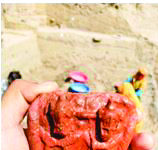
Parathyroid problems masquerade as common problems of many other organs, misleading many medical specialists. The parathyroid glands are endocrine organs that secrete the parathyroid hormone (PTH), parathormone, or parathyrin. The parathyroid glands were the last human organ identified in 1880 by Ivar Sandström, a Swedish medical student. The parathyroid glands were first discovered in the Indian rhinoceros by Richard Owen in 1852, hence, the single-horned Indian rhino (not the double-horned African rhino) is the mascot of endocrine surgery worldwide. Studies of parathyroid hormone levels by Roger Guillemin, Andrew Schally, and Rosalyn Sussman Yalow led to the development of laboratory immunoassays and a Nobel Prize, less than 50 years ago in 1977.
THE PARATHYROIDS: We have four tiny parathyroid glands, only a few millimetres in size, located behind the thyroid gland in the neck, in variable locations. Parathyroid glands share blood supply and drainage with the thyroid. PTH increases serum calcium levels and is counteracted by calcitonin produced by the thyroid gland. PTH with vitamin D plays a crucial role in maintaining bone health by regulating calcium and phosphate levels in the blood, and within the bones through its actions on the absorption of calcium from the gut, deposition and removal of calcium from the bones, and disposal in the urine by the kidneys. Vitamin D is produced in the skin and obtained from diet, and initially activated in the liver to calcidiol, and further activated to calcitriol in the kidney, facilitated by PTH. Hyperparathyroidism (surplus PTH) and hypoparathyroidism (deficient PTH) cause alterations in blood calcium levels and bone strength. Calcium plays a crucial role in regulating heart rhythm, and both high and low calcium levels can disrupt the heart’s electrical signals, potentially leading to irregular heartbeats (arrhythmias). World Hypopara Day is observed annually on June 1st to raise awareness about parathyroid diseases and the importance of early detection and treatment.
HYPOPARATHYROIDISM: Hypoparathyroidism is a rare condition, affecting about 30 out of 100,000 people each year, and can be caused by a variety of factors, usually due to damage or removal of the parathyroid glands during neck or thyroid surgery, though rarely due to autoimmune disorders, genetic conditions, or low magnesium levels. The chances of damage to or removal of healthy parathyroid glands or their blood supply during parathyroid or thyroid surgery are significantly less in the hands of an experienced expert parathyroid surgeon. Since parathyroid tumours or growths are rare, only a few surgeons globally, including this author, are dedicated to parathyroid surgery. Low calcium levels in the blood can lead to muscle spasms or cramps, tingling sensations, abdominal pain, brittle nails, dry skin, mental confusion, difficulty concentrating, poor recent memory, seizures, and abnormal heart rhythm (arrhythmia). Most patients can be managed with calcium and vitamin D supplements. In severe cases, Teriparatide, a synthetic form of parathyroid hormone (PTH), is prescribed.
HYPERPARATHYROIDISM: Primary hyperparathyroidism is the excess production of PTH by a tumour in the parathyroid gland. Secondary hyperparathyroidism is excessive PTH levels in response to low blood calcium levels due to kidney problems, vitamin D deficiency, or malabsorption of calcium and vitamin D from the gut. Since the excess PTH removes calcium from the bones and facilitates its elimination by the kidneys, with phosphate in the urine, the first symptoms are related to insoluble calcium phosphate urinary stone formation. Unsuspected and undiagnosed, the parathyroid tumour leads to recurrent urinary stone formation after repeated surgery for stones and can ultimately lead to kidney failure. It also leads to joint pains, weak, brittle, painful bones with cavities, and fractures on mild trauma, and even collapse of bones under the body weight, causing back pain, loss of height, and stooped posture (Kyphosis). High calcium levels also cause nausea, vomiting, constipation, indigestion, increased gastric acidity, and ulcers, and can trigger pancreatitis – a swelling of the pancreas gland that produces many hormones, and digestive juices. Leakage and circulation of these digestive juices can be catastrophic. Hyperparathyroidism can present with psychiatric symptoms like lethargy, fatigue, memory loss, depression, psychosis, delirium, and coma. Other symptoms include muscle weakness, itching, eye (band keratopathy), and heart (left ventricular hypertrophy) problems.
Patients with hyperparathyroidism rarely present to the endocrinologist. They present to the Urologists, Nephrologists, Orthopaedicians, Gastroenterologists, or Psychiatrists, often leading to missed or delayed diagnosis. The diagnosis is made on raised blood levels of calcium and parathyroid hormone. The tumour (source of the excessive PTH) is located with a radioisotope (SPECT, PET) scan, ultrasound scan, and if required, a 3D CT scan. Parathyroidectomy, the surgical removal of one or more parathyroid glands, is performed to remove the gland with the tumour or overgrowth. This surgery is challenging because these tumors are usually less than a centimeter in size, variable in location, between delicate vital structures, and look similar to other structures in that region, like lymph nodes, thyroid, and thymic nodules and the utmost care required to avoid any spillage of the soft friable tumor tissue. Certain medications can reduce calcium levels temporarily till surgery. In mild cases meeting certain criteria, surgery may be deferred. Gene tests can detect genetic causes when suspected due to family history or multiple endocrine tumours. Other family members are checked and operated upon when gene mutations are detected.
OSTEOPOROSIS, OSTEOPENIA, OSTEOMALACIA: All three conditions are related to bone health. Osteoporosis is increased porosity and severe bone loss, with a high risk of fractures; Osteopenia is mild bone loss and weakening; Osteomalacia is soft and weak (poor quality) bones due to inadequate bone calcium content, usually due to vitamin D deficiency. Bone is constantly broken down and rebuilt. Bone growth slows down after adolescence, stagnates after that, and later, there is gradual bone loss, especially among sedentary individuals and those with calcium and vitamin D deficiency. After menopause in women and age 60 in men, bone loss is significant due to declining estrogen levels in women and testosterone levels in men. Corticosteroids and certain other medications can affect bone health. Certain hormonal disorders, autoimmune diseases, and gastrointestinal disorders cause bone loss. Treatment is guided and monitored with a bone densitometry or DEXA (dual-energy X-ray absorptiometry) scan of the spine, hip, and wrist bones. This low-radiation X-ray measures the bone mineral density. Trabecular bone strength is gauged with an MRI scan.. Calcium, phosphorus, alkaline phosphatase, and parathormone blood levels are checked. Beyond the third decade, definitely by the fifth decade, calcium and vitamin D supplements are needed for mild osteopenia and osteoporosis. Excess vitamin D can be toxic. Bisphosphonates and other medications that reduce bone breakdown are prescribed as tablets or injections for osteoporosis. Injection Denosumab (antibody against RANKL that decreases bone resorption) and Teriparatide are prescribed under close medical supervision for severe osteoporosis.
FOR HEALTHY BONES: Bones have weight-bearing walls with inner mesh work of (trabecular) interlocking bony fibres that provide tensile strength to the bone. Bones contain minerals calcium, magnesium, phosphorus, and the protein collagen. Collagen accounts for about 30% of total body protein. Hence, a healthy protein, calcium, magnesium, and vitamin D containing diet, and exercise are essential to prevent and correct bone weakness. Caffeine (in coffee and energy drinks) in high doses promotes calcium loss through urine. Alcohol impairs calcium absorption, increases calcium excretion, leads to vitamin D deficiency, and contributes to bone loss. Smoking slows down bone production and impairs calcium absorption, thus reducing bone density. UVB rays of sunlight are required to produce vitamin D; hence, those who spend time indoors or wear heavy sunscreen to avoid tanning, or cover up when outdoors, need vitamin D supplements for bone and dental health and better immunity. Excess exposure to the sun is not desirable as it can cause skin burns and cancer. Bones and muscles need regular weight-bearing activity to remain strong. Sedentary lifestyle, prolonged bed rest, or space travel in zero gravity lead to rapid weakening of bones and muscles.
Dr. P.S.Venkatesh Rao is a Consultant Endocrine, Breast & Laparoscopic Surgeon, Bengaluru.







